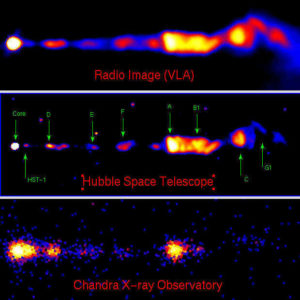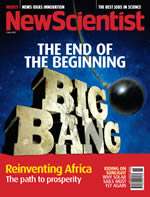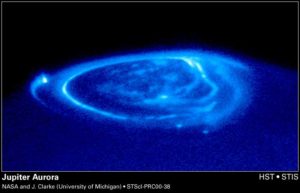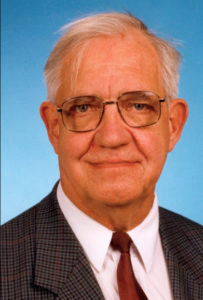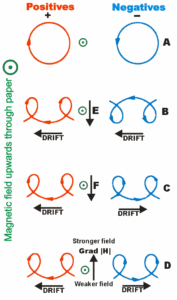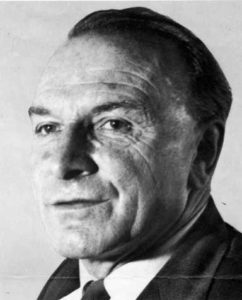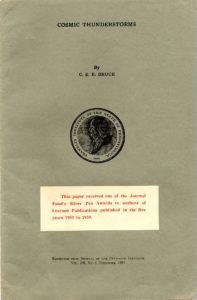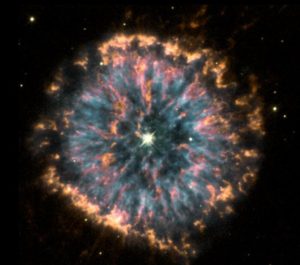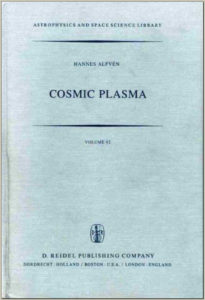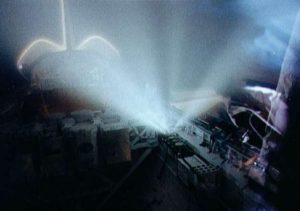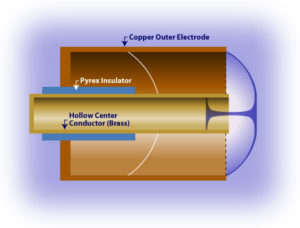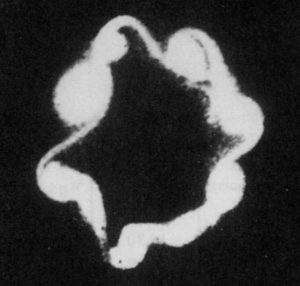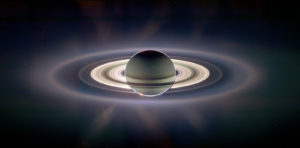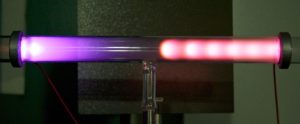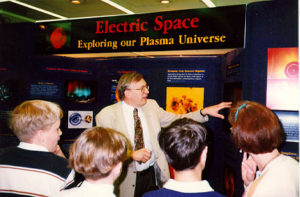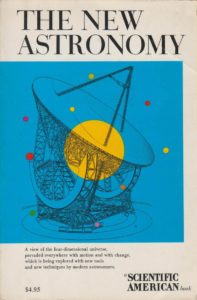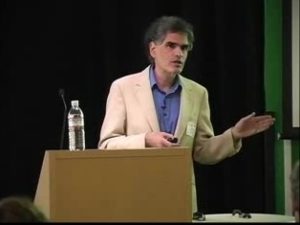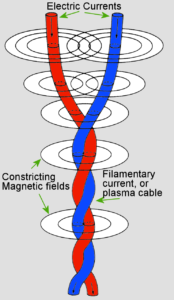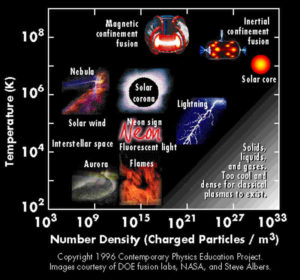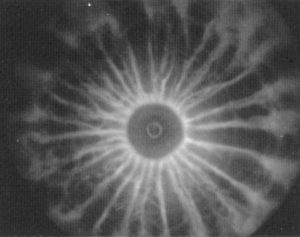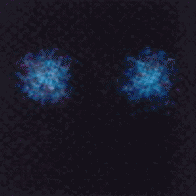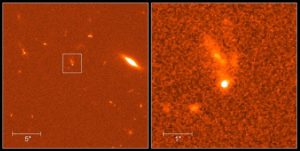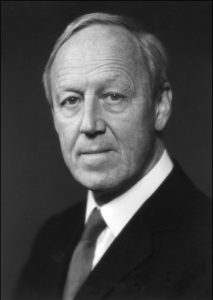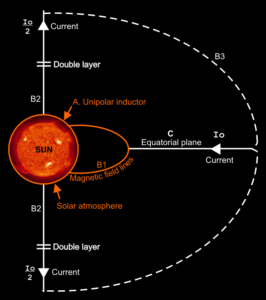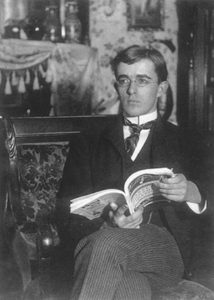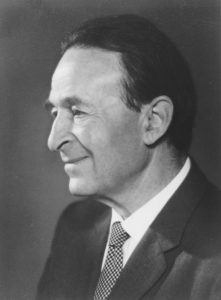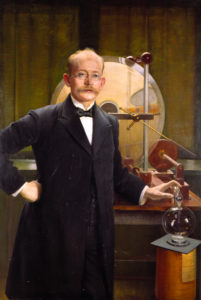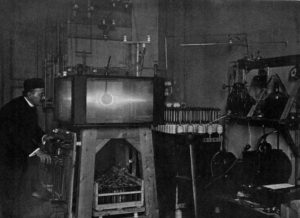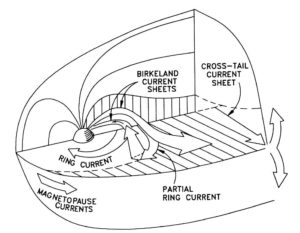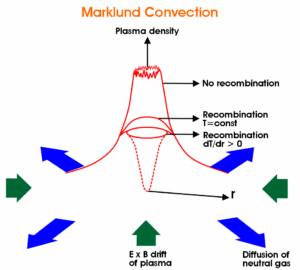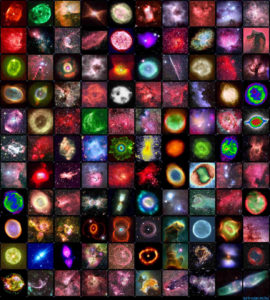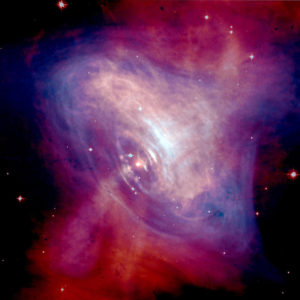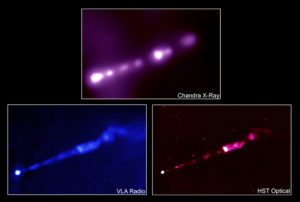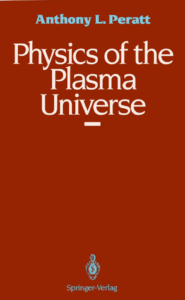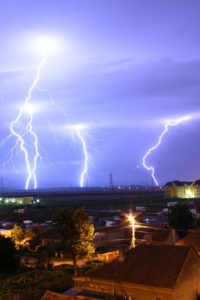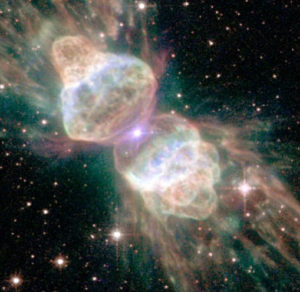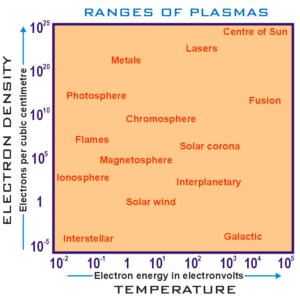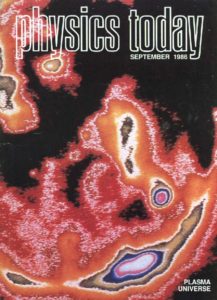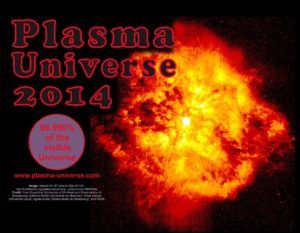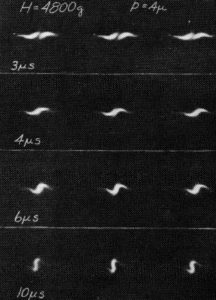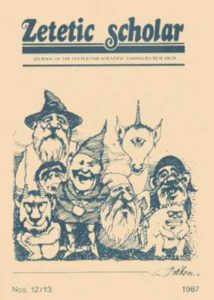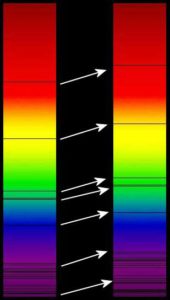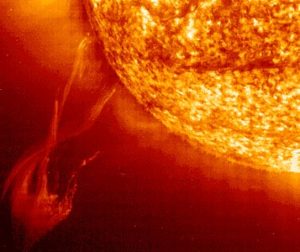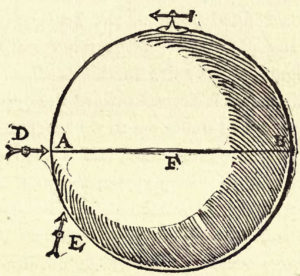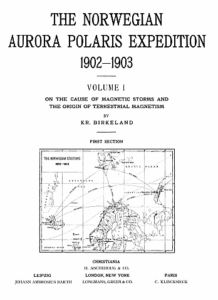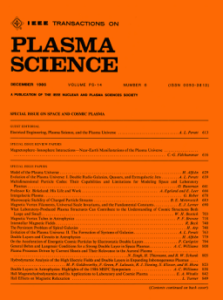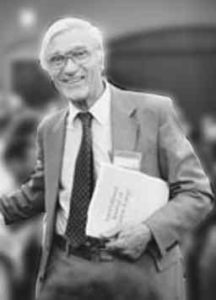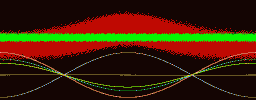
A cluster of double layers forming in an Alfvén wave, about a sixth of the distance from the left. Source
Alfvén wave
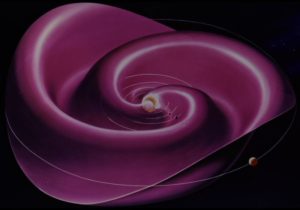
The heliospheric current sheet results from the influence of the Sun's rotating magnetic field on the plasma in the interplanetary medium [1]. The wavy spiral shape has been likened to a ballerina's skirt, and carries a tiny 10-10 A/m2
Astrophysical plasma
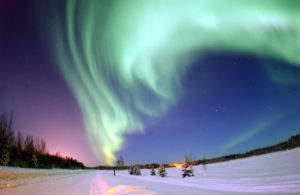
The Aurora Borealis, or Northern Lights, shines above Bear Lake
Wikimedia Commons picture of the year, 2006 Eielson Air Force Base, Alaska Source
Aurora
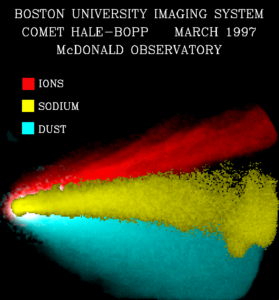
Comet Hale-Bopp showing three tails: (1) red: water ions (2) yellow: sodium atoms (3) blue: dust tail. Photo credit: J. Wilson, J. Baumgardner, M. Mendillo (Boston University)[1]
Comet
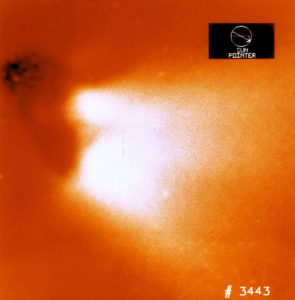
Jets emanating from nucleus of Comet Halley. Birkeland emulated jets from a cathode in a vacuum tube (see below) Source/credit
Comets: Kristian Birkeland's theory

The heliospheric current sheet results from the influence of the Sun's rotating magnetic field on the plasma in the interplanetary medium [1]
Current sheet
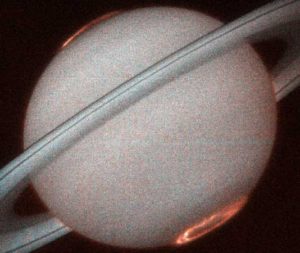
Saturnian aurora whose reddish colour is characteristic of ionized hydrogen plasma.[1] Powered by the Saturnian equivalent of (filamentary) Birkeland currents, streams of charged particles from the interplanetary medium interact with the planet's magnetic field and funnel down to the poles.[2] Double layers are associated with (filamentary) currents,[3][4] and their electric fields accelerate ions and electrons.[5]
Double layer

The Heliospheric current sheet carries a total electric current of about three trillion Amps (3×109 Amps)[1] Source
Electric currents in space plasmas
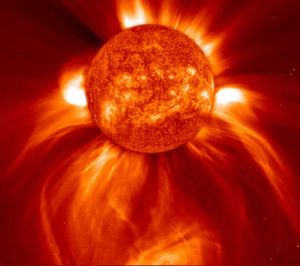
The Sun's immense gravity is unable to hold onto the "solar wind" which streams away at about 400km per second Source
Electromagnetic force
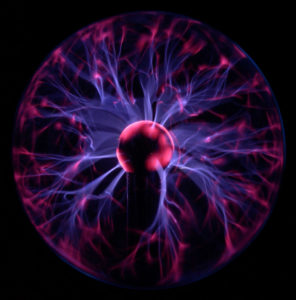
A plasma lamp, illustrating some of the more complex phenomena of a plasma, including filamentation. Source/credit
Plasma
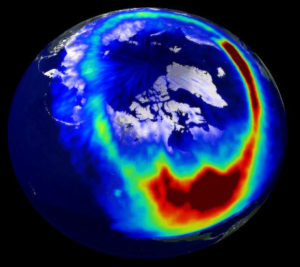
Planet Earth showing four states of matter, (1) the plasma aurora, (2) the gaseous atmosphere, (3) the liquid oceans, and (4) the solid Arctic ice. Source
Plasma: the first state of matter
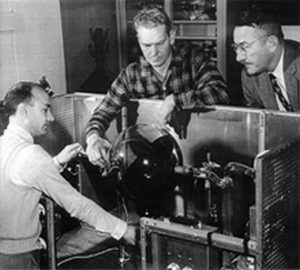
Willard Harrison Bennett (far right) with colleagues at the U.S. Naval Research Laboratory, working on the Störmertron tube Source
Willard Harrison Bennett
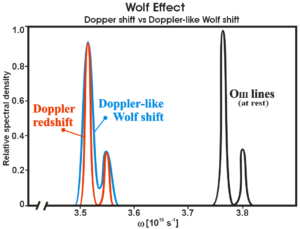
Wolf Effect illustrated. The chart shows idealized spectral lines of ionized oxygen (black lines, right) at rest, together with Doppler-shifted lines (red) due to motion of the source, and Wolf-shifted lines (blue) at rest. Note that three free parameters are arbitrarily chosen by the authors to obtain a shape that mimics the Doppler shift as closely as possible. The authors report observing a decrease in frequency for a Wolf Effect, but do not report observing as precise a correspondence as this since the detail conditions for the Wolf Effect to mimic a Doppler redshift are difficult to come by. [1] Source

